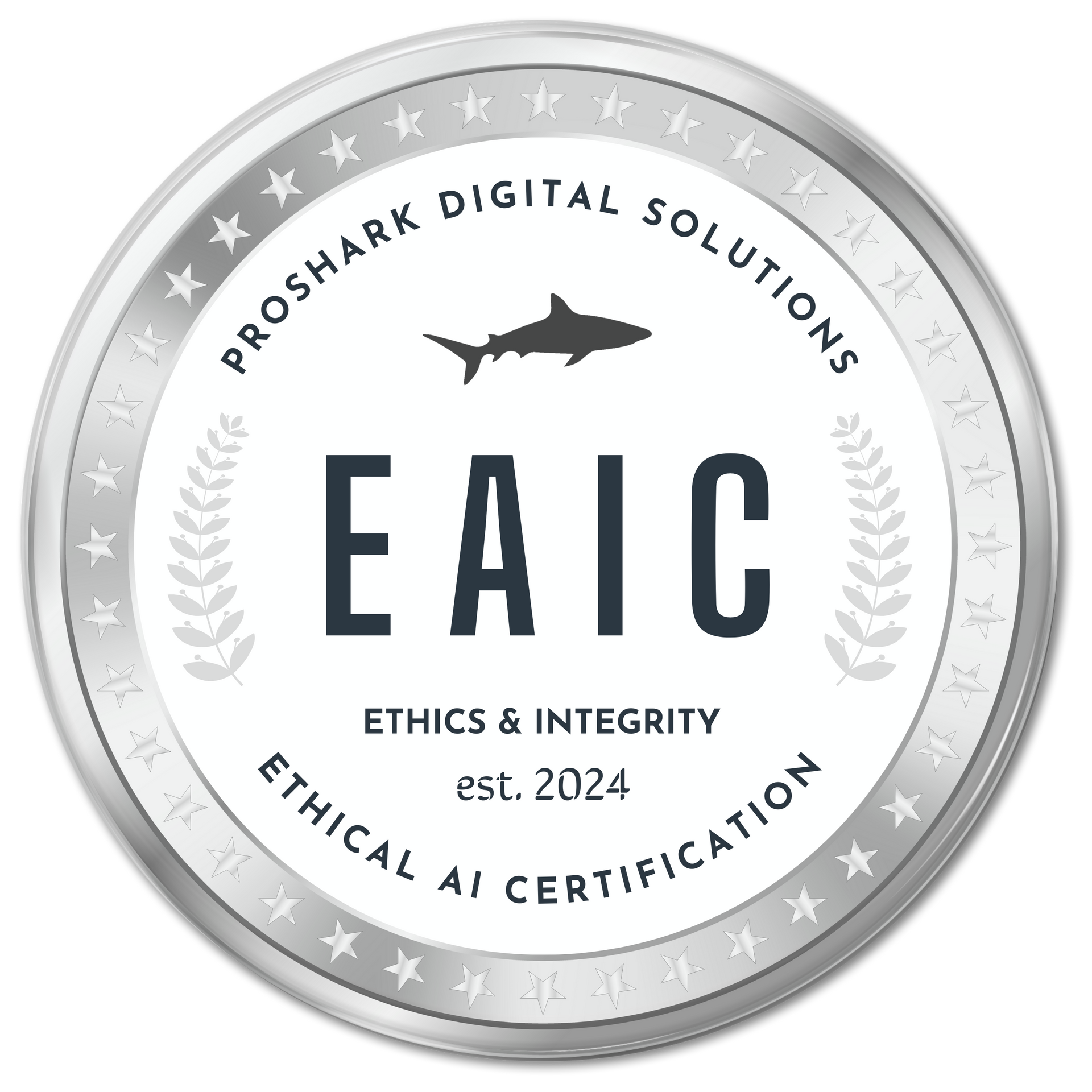Paid Ads Don't Work For Me. Why and What Should I Do?
Paid Ads Don't Work For Me. Why and What Should I Do?

In the dynamic world of digital marketing, paid advertisements are hailed as the rocket fuel for scaling businesses, providing instant visibility in a crowded marketplace.
However, a chorus of frustrated marketers and business owners frequently exclaim, "Paid ads just don't work for me!"
If you resonate with this sentiment, you're not alone. And more often than not, the issue isn't with the idea of paid advertising itself, but rather with its execution. Before you give up on paid ads, it's crucial to understand the root causes of why they might not be delivering the desired results for you.
Common Reasons Why Paid Ads Fail:
1. Targeting Issues: Are You Speaking to the Right Audience?
At the heart of every successful ad campaign is a clear understanding of the target audience. When this goes awry:
Geographical Mismatches: If your product caters to a specific region, but your ads are targeting a global audience, you're burning through your budget without reaching potential customers.
Incorrect Demographic Targeting: Displaying ads about luxury watches to teenagers or advertising skateboards to retirees might not yield optimal results. Ensure that your ads resonate with the demographic nuances of your audience.
2. Ad Content and Design: First Impressions Matter
A visually compelling ad with a clear message can make all the difference. Common pitfalls include:
Weak Calls-to-Action (CTA): If your audience doesn't understand the next steps, they are less likely to engage. A strong CTA guides the viewer effortlessly towards conversion.
Confusing Graphics or Text: An overcrowded design or jargon-filled text can alienate viewers. Keep designs clean and text concise.
3. Budget Mismanagement: Throwing Money in the Wrong Direction
Allocating your budget effectively can be a tightrope walk. Here's what can go wrong:
Overbidding or Underbidding on Keywords: Blindly bidding high can drain your budget fast, while bidding too low might render your ads invisible.
Not Allocating Budget Efficiently Across Campaigns: Spreading your budget too thin over numerous campaigns, or investing heavily in just one, can backfire. It's crucial to find a balance based on data-driven insights.
4. Platform Mismatch: Are You Fishing in the Right Pond?
Every platform attracts a specific user demographic. Ensure alignment:
Example: Advertising B2B services on TikTok might not be as effective as on LinkedIn.
Recognizing where your audience spends their time can drastically improve conversion rates.
5. Tracking and Analytics: Data is Your Compass
Steering your campaign without tracking results is like navigating without a compass:
Lack of Conversion Tracking: Not understanding where your conversions are coming from means you won't know which ads are effective.
Not Analyzing Data for Insights: Regularly review metrics to adjust strategies. For instance, if one ad version has a higher click-through rate, it might be worth increasing its budget.
Understanding these common pitfalls provides clarity on where adjustments can be made. The world of paid advertising offers immense potential, but like all tools, its effectiveness hinges on how it's used.
Symptoms of a Poorly Performing Ad Campaign:
A successful ad campaign isn't just about launching your advertisements and hoping for the best. It's about vigilantly monitoring performance, reading the signs, and making necessary tweaks to optimize results. Recognizing the early symptoms of a floundering campaign can be the difference between wasting your budget and achieving a robust ROI. Here are the critical indicators that something might be amiss:
1. Low Click-Through Rate (CTR):
A low CTR is a glaring symptom that your ad isn't resonating with your target audience. It suggests that while people are seeing the ad (impressions), very few are interested enough to click on it.
2. High Cost-Per-Click (CPC):
An unusually high CPC indicates that while people might be clicking on your ad, the cost for each of those clicks is steep. It might be a result of high competition for your chosen keywords or a mismatch in audience targeting.
3. Low Conversion Rate:
Getting clicks is just one part of the equation. If those clicks aren't translating into desired actions, such as sales, sign-ups, or downloads, then your landing page, offer, or post-click experience may be at fault.
4. High Ad Frequency:
If the same individuals see your ad too often, it leads to ad fatigue. Users become desensitized, or worse, irritated by the repeated appearance of the same ad, leading to a decline in effectiveness and potential negative feedback.
5. Rising Bounce Rate:
A high bounce rate means visitors are landing on your webpage and leaving almost immediately without engaging further. This could be due to a disconnect between the ad's promise and the landing page content or poor user experience.
6. Negative Feedback:
On platforms like Facebook, users can provide feedback on ads. If your ad receives a significant amount of negative feedback or hide requests, it's a clear indicator that it's not well-received.
7. Decreased Ad Position or Impression Share:
If your ads aren't appearing in prominent positions or are losing out on potential impressions, it's an indicator that competitors might be outbidding you, or your ad quality score is subpar.
8. Low Quality Score (specific to platforms like Google Ads):
A low-quality score, determined by factors like landing page experience, CTR, and ad relevance, can increase your CPC and reduce your ad's chances of being displayed.
9. Unsatisfactory Return on Ad Spend (ROAS):
If the money you're spending on ads isn't generating a positive return in terms of sales or other desired outcomes, it's a clear sign that the campaign is not performing optimally.
Recognizing these symptoms early gives you the opportunity to recalibrate and refine your ad strategy. Remember, even the most experienced marketers sometimes launch campaigns that don't hit the mark right away.
What sets successful campaigns apart is the consistent monitoring, learning from feedback, and making the necessary adjustments.
Steps to Optimize and Revive Your Ad Campaigns:
If your ad campaign is showing signs of underperformance, don't be disheartened. In the realm of digital advertising, constant optimization is key.
By analyzing the performance data and tweaking your approach, you can transform a floundering campaign into a powerhouse. Here are actionable steps to breathe new life into your ad campaigns:
1. Refine Your Audience Targeting:
Segmentation: Break down your target audience into smaller, more specific segments. Tailor your ad messages to resonate with each segment's unique characteristics.
Use Platform Tools: Platforms like Facebook and Google Ads offer detailed targeting options. Dive deep into demographics, interests, behaviors, and lookalike audiences to reach the right people.
2. A/B Test Ad Variations:
Creative Elements: Experiment with different visuals, headlines, and copy to see what resonates most with your audience.
Calls-to-Action (CTA): A simple change, like tweaking the CTA text or color, can significantly impact conversion rates.
3. Adjust Budget and Bidding Strategy:
Automated Bidding: Use platform-specific tools that automatically adjust bids to get the most value out of your budget.
Shift Budget: Allocate more budget to high-performing ads and reduce or pause underperforming ones.
4. Optimize Landing Pages:
Consistency: Ensure there's a seamless transition and consistent messaging from the ad to the landing page.
Page Load Speed: Improve loading times. A delay of even a few seconds can drastically increase bounce rates.
Mobile Optimization: Ensure landing pages are mobile-friendly, given the significant traffic from mobile devices.
5. Expand or Narrow Your Ad Placements:
Placement Audit: Review where your ads are being displayed. Sometimes, specific placements (e.g., Facebook's right column) might not be effective.
Platform Exploration: Consider expanding to other platforms or narrowing down to platforms where your audience is most active.
6. Leverage Retargeting:
Remarket to Engaged Users: Target users who have visited your site, added items to the cart, or engaged with previous ads but didn’t convert.
Segmentation: Customize retargeting ads based on user behavior (e.g., different ads for cart abandoners vs. website visitors).
7. Use Analytics and Feedback:
Deep Dive into Data: Use platforms like Google Analytics to understand user behavior post-click.
Survey and Feedback: Consider running surveys to gather direct feedback on why users might not be converting.
8. Stay Updated with Platform Changes:
Ad Platform Updates: Ad platforms frequently update algorithms, ad formats, and best practices. Stay in the loop to take advantage of new features.
Industry Trends: Monitor industry benchmarks and trends to understand how your campaign compares and where there might be room for improvement.
9. Consider Seasonal and External Factors:
Seasonal Trends: Some products or services might have seasonal fluctuations. Adjust your campaigns accordingly.
World Events: Global events, like major sports happenings or significant news events, can influence ad performance.
10. Educate and Upskill:
Training: Consider formal courses or certifications on platforms like Google Academy or Facebook Blueprint.
Hire or Consult: If optimization becomes overwhelming, it might be time to hire an expert or consult with an agency.
Reviving an ad campaign often requires a combination of analytical prowess, creativity, and persistence. With these steps in hand, you're well-equipped to diagnose, treat, and boost the health of your advertising efforts, leading to better results and a more robust ROI.
Alternative Marketing Strategies to Consider: While paid advertising is a popular avenue for driving traffic and sales, it’s by no means the only method available.
There are myriad marketing strategies businesses can employ to attract and engage customers, each with its unique advantages. If you're finding that paid ads aren't yielding the desired results, or if you're simply looking to diversify your marketing mix, consider the following alternative strategies:
1. Content Marketing:
Blog Posts: Establish authority in your niche by creating and sharing valuable, relevant, and consistent content that addresses the pain points of your target audience.
Ebooks and Whitepapers: Offer in-depth insights on industry topics. They can also be used to capture leads.
2. Search Engine Optimization (SEO):
On-Page SEO: Optimize website content, meta descriptions, and title tags to improve rankings on search engines.
Off-Page SEO: Build backlinks from reputable sources to enhance site credibility and rankings.
3. Email Marketing:
Newsletters: Regularly send curated content, updates, or promotions to your subscribers.
Drip Campaigns: Automate a series of emails to nurture leads and guide them through the buyer's journey.
4. Social Media Marketing (Organic):
Engaging Posts: Create and share posts that resonate with your audience, encouraging interactions and shares.
Live Videos: Use platforms like Facebook Live or Instagram Live to connect with your audience in real-time.
5. Influencer Marketing:
Partnerships: Collaborate with social media influencers in your industry to showcase your products or services to their followers.
Takeovers: Let an influencer take over your brand's social media for a day to provide fresh content and reach a broader audience.
6. Affiliate Marketing:
Partnerships: Work with affiliates who promote your products/services and earn a commission for every sale or lead they generate.
Networks: Join affiliate networks to connect with potential affiliates.
7. Public Relations (PR):
Press Releases: Share noteworthy company news with media outlets.
Media Pitches: Reach out to journalists and bloggers with story ideas related to your brand.
8. Community Building:
Forums and Groups: Participate in or create niche-specific forums or groups on platforms like Reddit or Facebook.
Offline Events: Host or sponsor events, workshops, or webinars to connect with your audience in person or virtually.
9. Referral Programs:
Incentives: Offer rewards or discounts to customers who refer new clients to your business.
Word of Mouth: Encourage satisfied customers to share their positive experiences.
10. Podcast and Video Marketing:
Hosting: Start a podcast or a YouTube channel related to your niche, sharing valuable insights and interviewing industry experts.
Guest Appearances: Appear on established podcasts or video channels to tap into their audience.
Diversifying your marketing approach can not only help you find what resonates best with your target audience but also insulate your business from the volatility of relying heavily on a single channel.
Each strategy requires time, effort, and often, a unique skill set. Start with one or two, measure the results, and then expand your efforts as you discover what works best for your business.
Conclusion
Navigating the vast realm of marketing requires both strategy and adaptability. While paid ads offer a direct route to potential customers, they're just one piece of the puzzle. By diversifying your marketing approaches, you not only hedge against potential pitfalls but also open doors to varied audiences and engagement styles. Remember, the key to successful marketing lies in understanding your audience, continually adapting based on insights, and maintaining a holistic approach to reach your goals.







